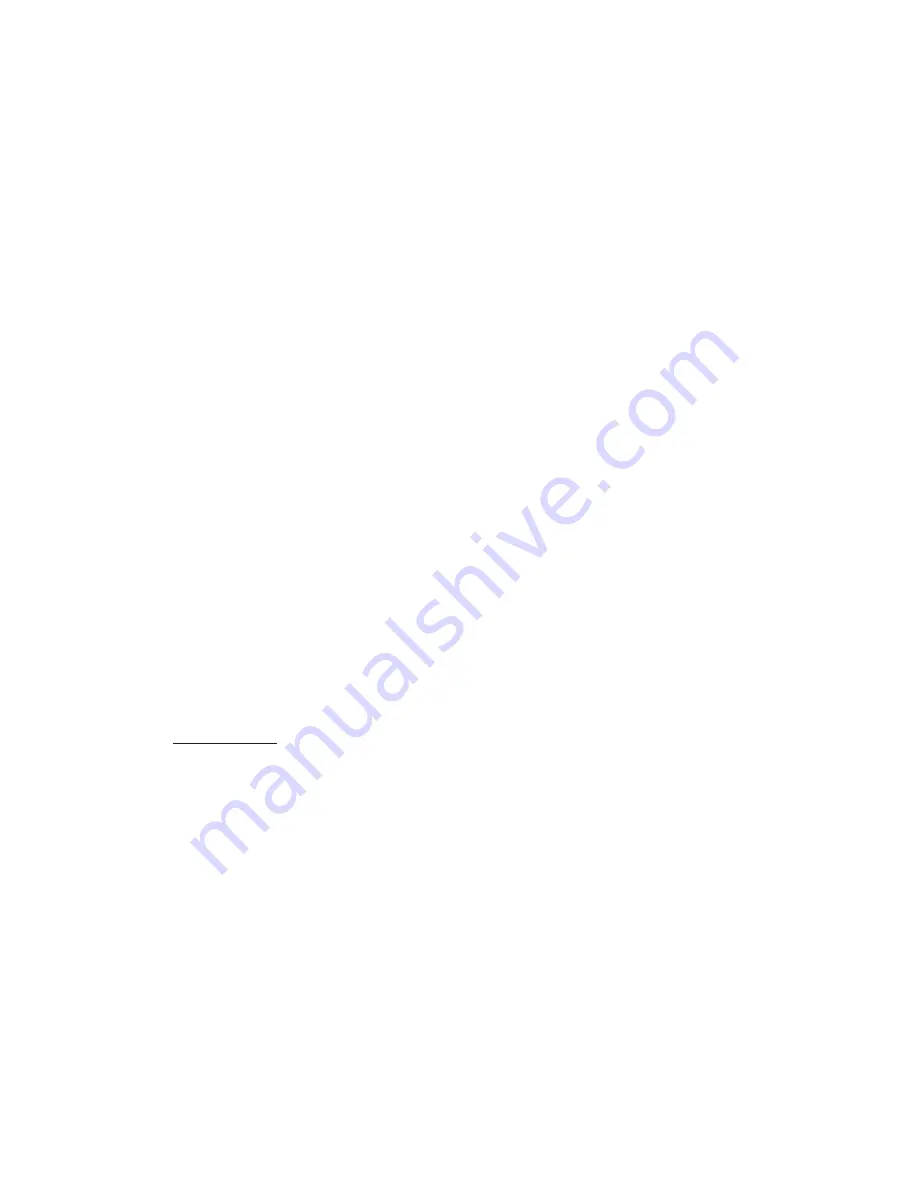
13
DISCHARGE JUMPER ASSEMBLY
Inspect the o-ring grooves on the discharge jumper (37)
for damage. Inspect the air passageways of the discharge
jumper for excessive carbon which would restrict the air
flow from the compressor. If the carbon build-up exceeds
1/16” in any of the passageways, the discharge jumper
must be replaced with its service kit.
See the Maintenance
and Service Parts listing in this manual for kit contents and
part numbers.
Inspect the safety valve (12). If there are signs that the
safety valve was “popping off”, it should be replaced with
the safety valve kit.
See the Maintenance and Service Parts
listing in this manual for kit contents and part numbers.
CRANKCASE
Check the cylinder head gasket surface on the deck (top)
of the crankcase (21) for nicks, gouges, and marring.
A metal gasket is used to seal the cylinder head to the
crankcase. This surface must be smooth and free of all but
the most minor scratching. If excessive marring or gouging
is detected, the compressor must be replaced.
ASSEMBLY
General Note: All torques specified in this manual are
assembly torques and typically can be expected to fall off
after assembly is accomplished. Do not re-torque after
initial assembly torques fall unless instructed otherwise. A
compiled listing of torque specifications is presented later
in this manual.
INCH POUNDS TO FOOT POUNDS
To convert inch pounds (in-lbs) to foot pounds (ft-lbs) of
torque, divide inch pounds by 12.
Example: 12 Inch Pounds = 1 Foot Pound
12
FOOT POUNDS TO INCH POUNDS
To convert foot pounds (ft-lbs) to inch pounds (in-lbs) of
torque, multiply foot pounds by 12.
Example: 1 Foot Pound x 12 = 12 Inch Pounds
REAR END COVER
1. Install the o-ring (24) on the rear end cover (25).
2. Orient the rear end cover (25) to the crankcase (21)
using the reference marks made during disassembly.
Carefully install the rear end cover on the crankcase
making certain not to damage the crankshaft bearing
surface. Note: The rear end cover should be fully seated
against the crankcase at this point.
3. Install the four end cover cap screws (26). “Snug” the
screws then tighten to 195–213 in-lbs (22-24 N•m)
using a crossing pattern.
REAR COVER PLATE
1. Place the rear cover plate gasket (30) onto the rear
cover plate (32). Note: This should be the same surface
that the old gasket was removed from.
2. Place the gasketed side of the cover plate (32) against
the rear end cover (25) making sure to line up the two
bolt holes.
3. Install the two cap screws (33) and lock washers (34)
into the threaded holes of the end cover and hand
tighten both cap screws.
4. Torque the two cap screws (33) to 239–292 in-lbs (27-
33 N•m) to secure the rear cover plate (32) to the rear
end cover (25).
CRANKCASE COVER
1. Position the crankcase cover gasket (27) on either
the crankcase (21) or crankcase cover (28) and install
the crankcase cover on the crankcase using the four
cap screws. “Snug” all four cap screws then torque
to 62-71 in-lbs (7-8 N•m) using a crossing pattern.
CYLINDER HEAD ASSEMBLY
PART ONE: HEAD INSTALLATION
1. Note the position of the protruding crankcase alignment
pins (31) on the deck (top) of the crankcase (21). Install
the metal inlet reed valve/gasket (17) over the alignment
pins on the crankcase.
2. Position the valve plate assembly (16) on the crankcase
(21) so that the crankcase alignment pins (31) fit into
the corresponding holes in the valve plate assembly.
3. Position and install one of the embossed metal gaskets
(14) over the alignment bushings (23) protruding from
the cooling plate (15). Position and install the second
embossed metal gasket over the alignment bushings
on the opposite side of the cooling plate. When properly
installed, the outline of the two embossed gaskets will
match the outline of the cooling plate.
4. Install the cooling plate (15) onto the valve plate
assembly (16) by lining up the alignment bushings (23)
on the cooling plate over the oversized countersunk
holes of the valve plate assembly. Again, when properly
installed, the outline of the cooling plate matches the
outline of the valve plate.
5. Position and install the cylinder head (13) over the
alignment bushings (23) protruding from the cooling
plate. When properly installed, the outline of the cylinder
head assembly will match the outline of the cooling plate
and valve plate assembly.
Note: The alignment bushings will only fit into two of
the cylinder head bolt holes.
6. Install the six head bolts with washers (1) and snug
them (finger tight), then torque the bolts in the sequence
specified in Figure 11.














































